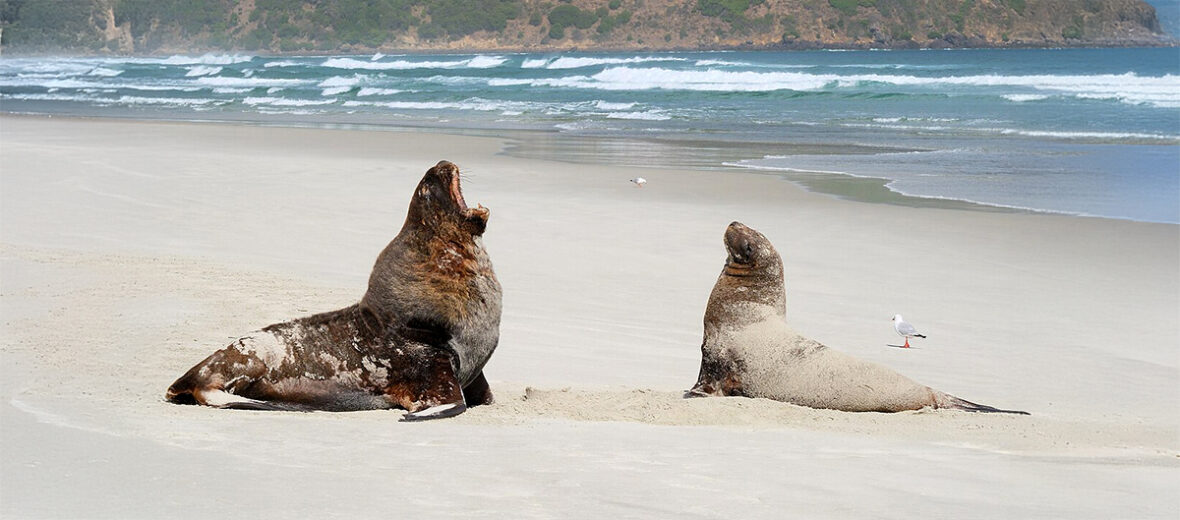
The New Zealand sea lion, aka Hooker’s sea lion, pakake (for both male and female), whakahao (male), or kake (female) in Māori, hails from New Zealand and primarily breeds on New Zealand’s subantarctic Auckland and Campbell islands, and have recently been slowly breeding and recolonizing around the coast of New Zealand’s South and Stewart islands. They are threatened by overfishing and over-harvesting of fish, and bycatch (getting caught in long lines & purse seine nets; hunting; trapping; as well as earthquakes and tsunamis. These sea lions are listed as Endangered by the IUCN. Their populations are also decreasing.
First the Stats…
Scientific name: Phocarctos hookeri
Weight: Up to 990 lbs.
Length: Up to 11.5 feet
Lifespan: Up to 20+ years
Now on to the Facts!
1.) These sea lions are among the world’s rarest sea lion species.
2.) They are considered 1 of the largest mammals in New Zealand, with the blue whale being number 1… by far.
3.) Just like all otariids (pinnipeds), there is notable sexual dimorphism (males and females look quite different), as the males are substantially larger and have a mane.
4.) The New Zealand sea lion’s terrestrial behaviors are unique among other pinnipeds. In the breeding season, females slowly move inland with their pups to protect them from harassment by males, storms, wind, and potential parasitic infections. They can travel up to 1.2 miles inland, from sandy beaches to tall grasses, and even into forests. They are the only pinniped species known to travel this far inland and also that have a preference for forests.
5.) In the past, these sea lions were distributed all over mainland New Zealand and Stewart Island, but have been extirpated from these areas due to human hunting activities.
But wait, there’s more on the New Zealand sea lion!
6.) Fish, squid, octopus, crustaceans, sea birds, and also New Zealand fur seals are all on the menu.
7.) Great white sharks, in turn, prey on these sea lions.
Did you know…?
There were only an estimated 12,000+/- wild individuals as of 2014, and those numbers are generally decreasing.
8.) These sea lions are considered the most threatened sea lion in the world.
9.) Females undergo up to an 11 month gestation that yields a single pup every 1 – 2 years.
10.) An outbreak of an introduced bacterial disease caused by a Campylobacter species in 1998 killed an estimated 53% of newborn pups and 20% of adult females.
Now a Short New Zealand Sea Lion Video!
Be sure to share & comment below! Also, check out the Critter Science YouTube channel. Videos added regularly!
Want to suggest a critter for me to write about? Let me know here.
Some source material acquired from: Wikipedia & IUCN
Photo credit: Pseudopanax




